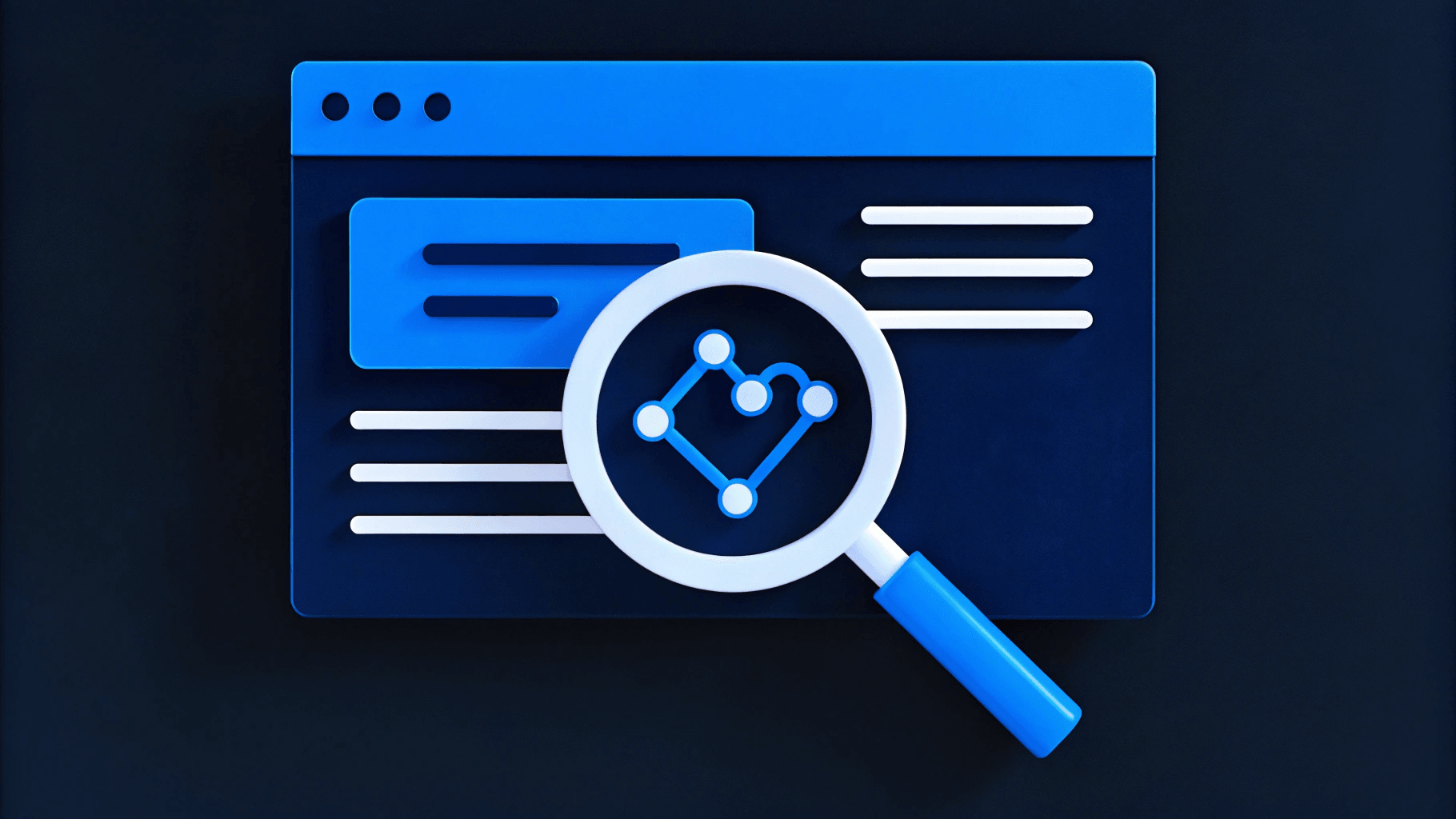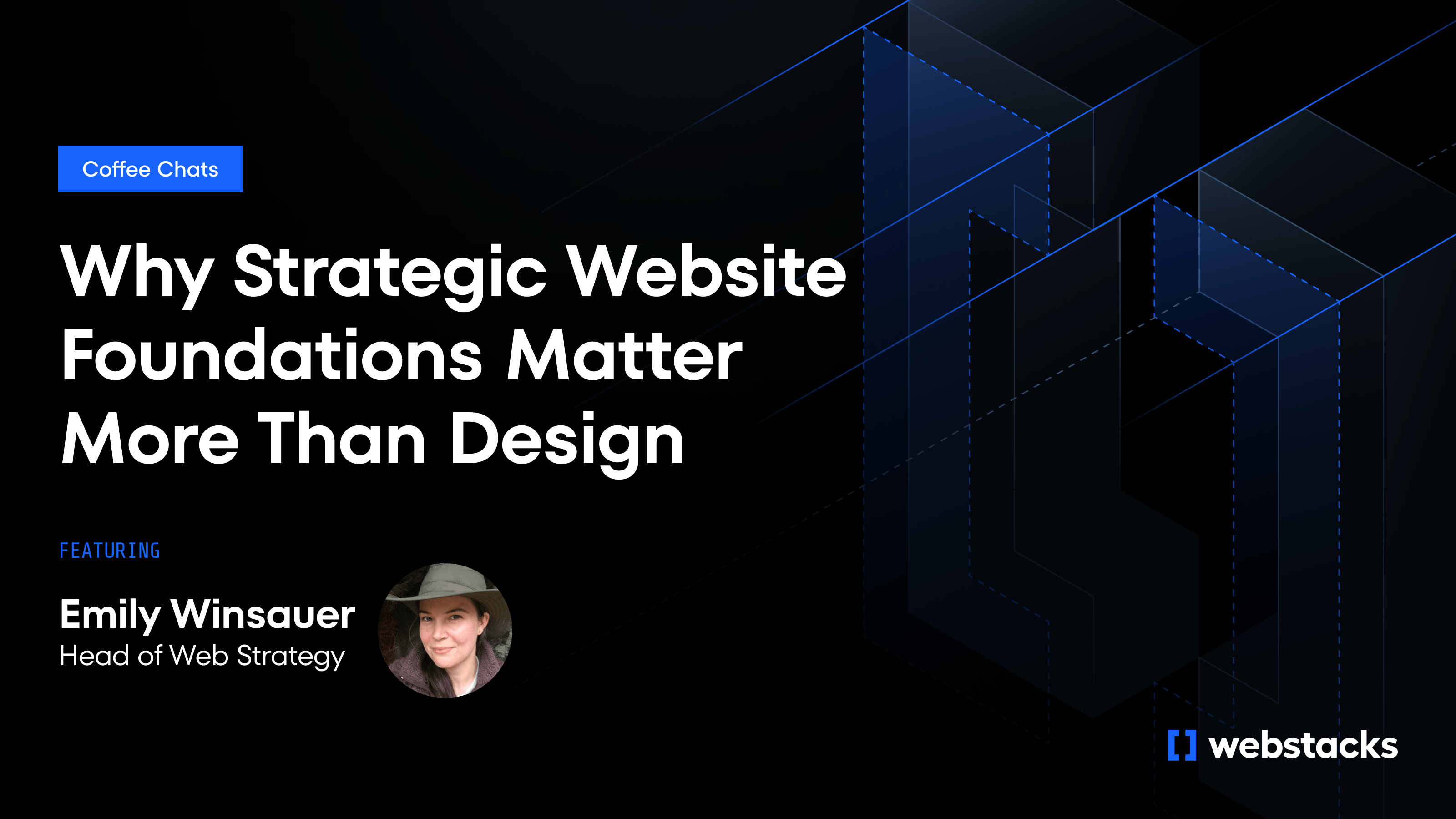Enterprise websites are complex ecosystems that power marketing, sales, and user engagement at scale. As companies grow, so do the expectations around how those websites function and serve diverse audiences. This is where an enterprise UX design serves as a key differentiator.
Unlike traditional UX, which often focuses on consumer-facing simplicity, enterprise UX design must address layered user roles, global operations, compliance demands, and internal ownership.
When done right, it empowers marketers to move faster and enables consistent, scalable brand experiences.
In this guide, we’ll explain what enterprise UX design entails, why it matters for high-growth teams, and how Webstacks helped enterprises build UX systems that scale with their businesses.

What Is Enterprise UX Design?
Enterprise UX design is the process of crafting user experiences for large-scale digital systems such as enterprise websites, platforms, or internal tools.
These systems are used by a wide range of users with varying goals. Users often include marketers, product managers, engineers, partners, and customers across different geographies, business units, and technical skill levels.
Unlike consumer UX, which is typically streamlined for a single user persona, enterprise UX must account for complex roles, longer decision cycles, and layered governance.
Learn more: UI vs UX Design
At Webstacks, we take a product-minded approach to UX. We treat the website as a living platform, not a static project. That means building modular design systems that evolve over time, architected for marketing velocity, multi-persona journeys, and extensible CMS infrastructure.
Why Enterprise UX Design Is Important for Growth-Stage Companies
For fast-growing companies, your website is your primary growth engine. And if that engine is clunky or confusing for internal teams and external users, it becomes a blocker instead of a driver.
Enterprise UX design focuses on making the site usable for visitors and internal teams too. It aligns structure, navigation, and page templates with real business workflows, so marketing can launch campaigns faster, sales can direct leads to the right content, and support teams can help customers find answers without friction.
Adopting a headless CMS is one part of this. It gives content editors control without breaking layouts, removes reliance on engineering for every update, and allows for rapid iteration. But good UX goes beyond the CMS. It’s also about designing with reusability in mind and building components that scale across pages and teams.
This kind of UX discipline pays off quickly. It reduces time-to-launch, cuts down on support requests, and makes it easier to localize or personalize content as the company expands.
Instead of redesigning the site every year, teams can build on a stable foundation and grow faster with fewer roadblocks.
5 Common UX Challenges in Enterprise Environments
Enterprise websites do a lot of heavy lifting. They support campaigns, educate buyers, showcase products, and serve customers. When the user experience falls short, teams feel it. Marketing slows down, and product launches miss the mark.
These are the most common UX challenges that enterprise teams face:
1. Fragmented Stakeholder Needs
Enterprise sites have to serve many people: demand gen wants faster publishing, product wants deeper education, sales wants better conversion paths, and leadership wants brand consistency.
When every team pushes in a different direction, the result is a site that tries to do too much and doesn’t do any of it well.
The fix isn’t just alignment meetings. It’s building a flexible UX framework that gives each team what they need, without compromising the overall experience. This usually means modular components, clearly defined ownership, and user flows that map to business goals.
2. Rigid CMS and Developer Bottlenecks
Marketing teams shouldn’t have to wait on developers to update the site or launch campaigns. But this is still one of the most common (and avoidable) issues.
A composable CMS paired with reusable design components gives non-technical teams the power to build and adjust pages on their own. Developers can focus on more strategic work and marketers regain speed.
3. Content Governance at Scale
Scaling content across regions, personas, or verticals gets complicated fast. Add in localized messaging, legal disclaimers, and regulatory compliance, and you’re suddenly managing dozens of variations for a single page or campaign.
Without a strong UX system that contains clear page structures, rules for variation, and role-based access, the website turns into chaos.
4. Template Fatigue
Most enterprise teams start with a few good templates. But over time, those templates get stretched too far. Every new initiative tries to fit into the same layout and pages start to feel repetitive. As a result, visitors tune out.
Modular design systems solve this by giving teams a toolkit, not a set of rigid frames.
5. Performance, Accessibility, and Security
Enterprise websites must be fast, compliant with accessibility standards, and secure across all entry points. UX that ignores these factors will inevitably lead to bounce rates, legal risks, or technical debt.
These challenges are both technical and structural. That’s why at Webstacks, we design UX systems that account for cross-team collaboration, editorial independence, and website governance.
How to Build UX for Diverse Enterprise Use Cases
Enterprise websites rarely serve a single audience. Marketing teams, product managers, global partners, and customers all rely on the site in different ways. That’s why enterprise UX can’t be one-dimensional. It must be tailored to support varied roles, tasks, and regional contexts without compromising performance or brand consistency.
Here’s how smart UX design meets the needs of different enterprise teams:
Marketing Teams
Marketers need to move fast. A great UX system gives them the tools to build landing pages, publish content, and update CTAs without filing a dev ticket. With flexible components and editor-friendly CMS integrations, marketing teams regain control over the site and can optimize campaigns in real time.
Product and Operations Teams
For product teams, the website might be a hub for feature releases, onboarding content, or customer education. UX must support clarity, navigation, and scalability across documentation or knowledge base areas. Operations teams also benefit from clear permissions and workflows that prevent bottlenecks and maintain governance.
Global and Multi-Brand Teams
Enterprises with global reach or multiple brands need localization, region-specific content, and the ability to launch microsites. Webstacks solves this for our clients using modular UX systems that support versioning, multi-language content, and microsite governance, without bloating the CMS or fragmenting the brand.
Enterprise Buyers and End Users
Your UX must guide prospects through tailored journeys, highlight solutions by use case or industry, and reduce friction from discovery to conversion.
By designing for these real-world scenarios rather than abstract personas, you can make sure the website performs as a business tool rather than just a brand statement.

Key Principles of Great Enterprise UX Design
Successful enterprise UX design doesn’t happen by chance. It’s grounded in a clear set of principles that address strategy, design, and tech.
Here are the foundational principles we follow at Webstacks:
1. User-Centered Research
Every project starts with listening. We conduct structured stakeholder interviews, analyze customer journeys, and map out friction points. This ensures the UX isn’t built on assumptions but on real user needs and business objectives.
2. Design Systems Thinking
Instead of designing one-off pages, we create component-based systems that scale. They support consistency across touchpoints and allow teams to launch pages faster. Each component is specified with clear functionality, so content editors know exactly how to use it.
3. CMS and Tech Stack Alignment
A great UX can be ruined by a bad CMS experience. We build UX systems that align with the underlying technology, whether that’s Contentful, Sanity, or a custom stack, so that what’s designed can actually be executed and maintained over time.
4. Accessibility, Performance, and Compliance
Good UX must be accessible to everyone. We design with ADA standards in mind, build for speed (Jamstack-first), and make sure systems can handle localization, legal content, and compliance.
5. Continuous Iteration
We treat the launch as a milestone, not the finish line. UX is an ongoing process of learning, testing, and improving. Our modular approach makes it easy to adjust, expand, or refine your site based on real-world performance.
How to Evaluate UX Success in Enterprise Settings
Measuring UX success in an enterprise environment goes beyond click-through rates or heatmaps. The real question is: does your website enable teams to operate faster, engage users, and support business growth?
Here are key metrics and methods we recommend tracking:
Internal Adoption Metrics
If your CMS or UX system is designed well, internal teams will actually use it. Track editor satisfaction, frequency of content updates, and how quickly teams can launch new pages or campaigns without developer support.
Conversion and Engagement Benchmarks
Evaluate high-impact pages like your homepage, pricing, and solution pages. Look at how UX changes affect bounce rates, form fills, demo requests, or other conversion events. Your UX should make it easier for users to take action, especially across complex or multi-step journeys.
Time-to-Market for New Initiatives
How long does it take to launch a new landing page or microsite? How many people need to be involved? Enterprise UX systems should streamline this process, not slow it down. Track how UX improvements reduce launch time and improve campaign velocity.
Accessibility and Performance Audits
Great UX is fast, inclusive, and functional across all devices and user types. Use tools like Lighthouse or PageSpeed Insights to measure load speed, responsiveness, and accessibility.
Qualitative Feedback
Talk to internal teams and external users. What feels intuitive? What’s frustrating? Pair this with session replays or usability testing to uncover hidden UX issues that data alone can’t capture.
Real Results: Enterprise UX in Action
The value of enterprise UX design becomes clearest when you see it in action. At Webstacks, we’ve helped enterprise companies transform their websites into scalable platforms with great UX.
Justworks: Building for Autonomy
Justworks needed a website that could support its growing product offering and evolving marketing needs. Their existing stack (built on Ruby with a complex CMS setup) was slowing down content production and creating friction for both marketers and developers.
To solve this, the team implemented a modern frontend architecture using Gatsby, rebuilt their Contentful instance to be more intuitive, and launched a modular design system that brought consistency to the user experience. These changes gave non-technical teams the ability to create and manage content, and maintain strong design and brand standards.
The outcome was faster campaign launches and easier cross-team collaboration.
ServiceTitan: UX That Supports Multi-Team Collaboration
ServiceTitan needed a website that could scale with its growing product ecosystem and support multiple teams, including marketing, brand, and customer success. The original site, built on HubSpot CMS and patched together by various contractors, struggled with inconsistent design and slow performance.
The team rebuilt the site using a modern stack with Gatsby and Contentful.
A modular design system brought consistency across pages and gave non-technical users the ability to create and update content. This shift supported faster campaign launches, reduced production overhead, and helped unify branding across ServiceTitan and its subsidiaries, Aspire and FieldRoutes.
Use UX as a Growth Lever
Too often, enterprise UX is treated as a finishing touch—a layer of polish to make a site “look good.” But in reality, UX is one of the most strategic levers you can pull to drive growth, improve operational efficiency, and empower your teams to move faster.
When UX is thoughtfully designed, it does more than delight users. It aligns internal workflows, reduces technical debt, accelerates time to market, and creates a web experience that can grow with your business. For companies navigating complex markets, global expansion, or rapid scaling, that’s a necessity.
At Webstacks, we specialize in building enterprise websites that do exactly that. We design for autonomy, flexibility, and measurable outcomes.
Ready to build a UX foundation that scales with your organization?




